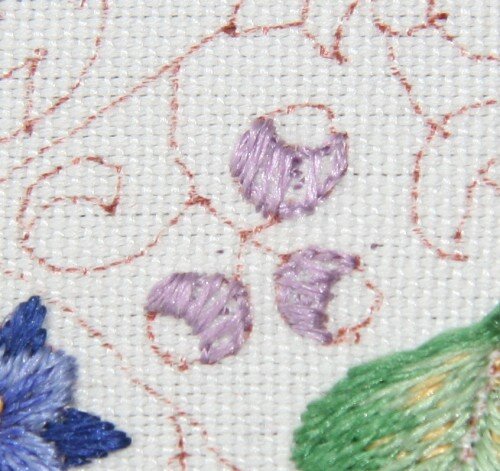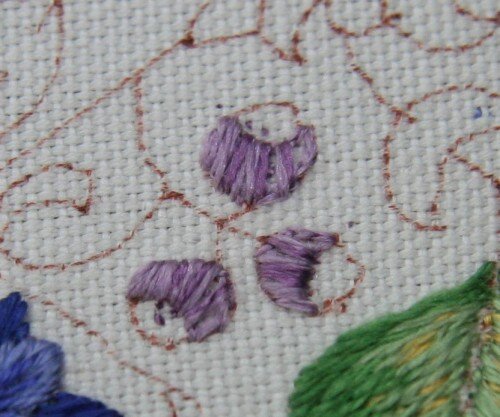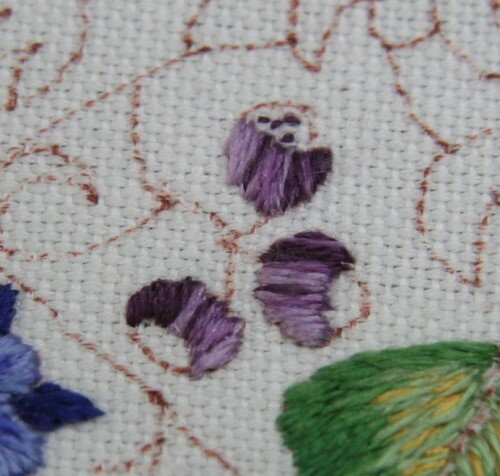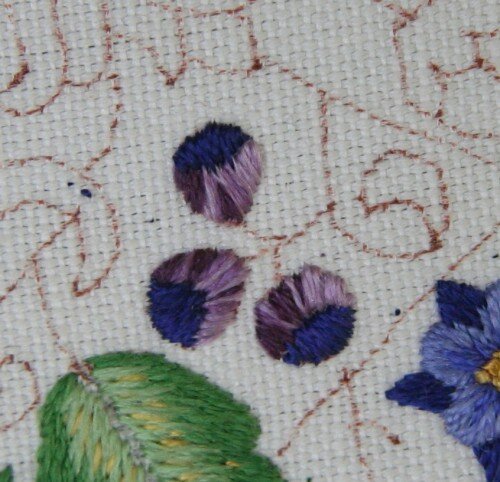Efficient stitching
My father trained to be an industrial engineer. He was also in the military. My mother trained as a home economist and raised 4 children. One of my brother's works for Ford. I know all about efficiency. I like to be efficient and I admire it in others. It saves time doing things that my not be fun or interesting (which we all have to do sometimes) and leaves more time for being creative.On the Trevelyon's Cap project I decided to experiment with efficient stitching. Now that I'm working on the last three panels of the cap - each of which is identical to the first - I am looking for the most efficient way to stitch them. I want to move on to the band at the bottom, which is new work and will be, by my definition, more fun.As it came time to do the remaining nine little blueberries in the design, I decided to stitch them assembly line fashion. This means I did the same step to every blueberry before moving on to the next step. Step one - split stitch the outline and satin stitch the lightest shade of purple.
Step one - split stitch the outline and satin stitch the lightest shade of purple.  Step two - satin stitch the medium shade of purple.
Step two - satin stitch the medium shade of purple. Step three - satin stitch the darkest shade of purple.
Step three - satin stitch the darkest shade of purple. Step four - satin stitch the dark blue center.This efficient method worked really well on the blueberries. I needed to use four different colors of thread so working with only one color at a time meant I was less likely to use the wrong shade as I got tired (or forgetful!). It also gives the impression of things moving more quickly than they really are, I think. The pieces looked farther along since something is stitched in each little blueberry rather than all of one and nothing in the other eight and that's encouraging.What about you? Do you use this - or some other - form of efficient stitching or do you prefer to work all of one motif first before moving on to the next identical one?
Step four - satin stitch the dark blue center.This efficient method worked really well on the blueberries. I needed to use four different colors of thread so working with only one color at a time meant I was less likely to use the wrong shade as I got tired (or forgetful!). It also gives the impression of things moving more quickly than they really are, I think. The pieces looked farther along since something is stitched in each little blueberry rather than all of one and nothing in the other eight and that's encouraging.What about you? Do you use this - or some other - form of efficient stitching or do you prefer to work all of one motif first before moving on to the next identical one?
